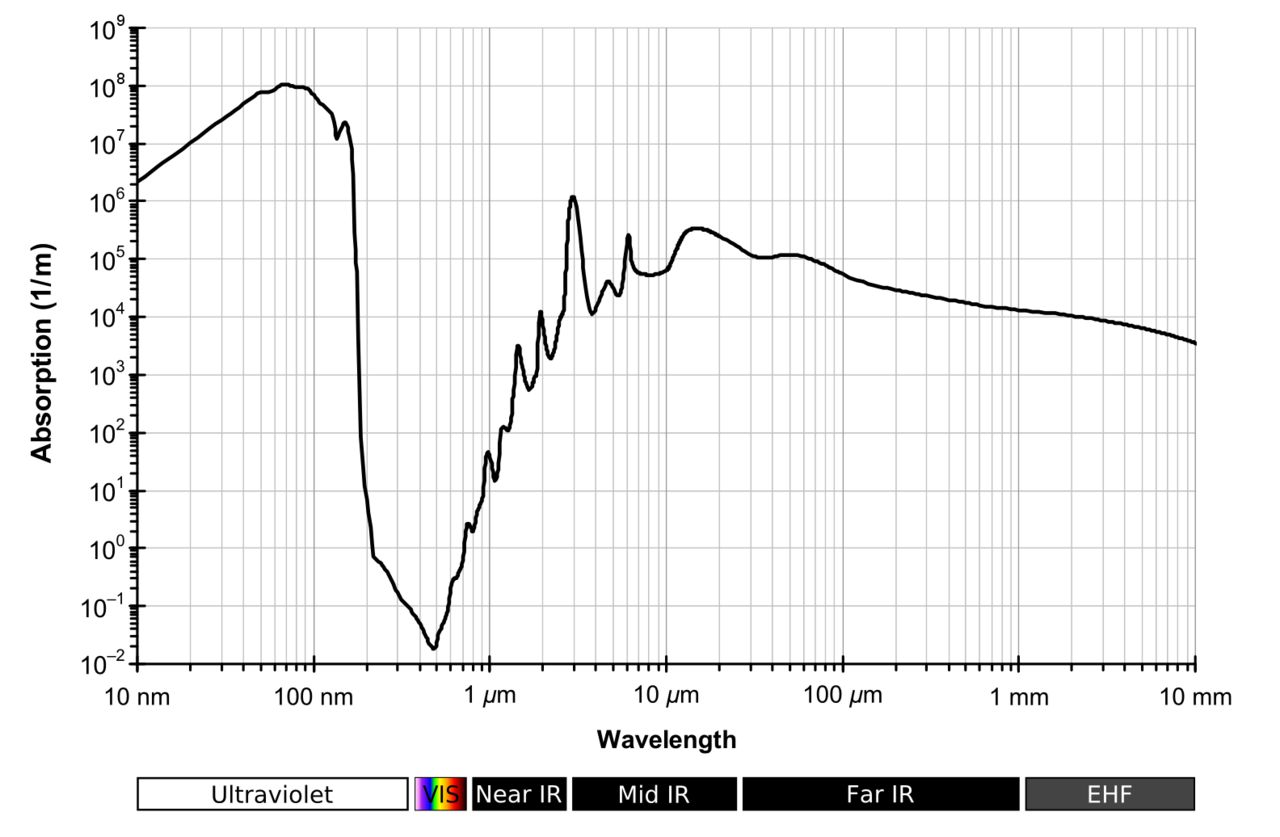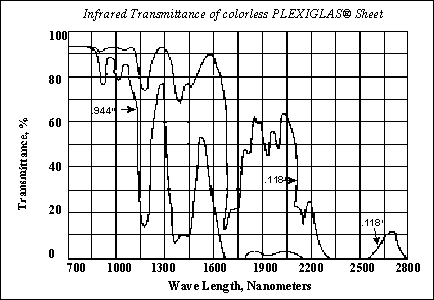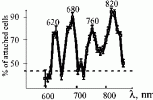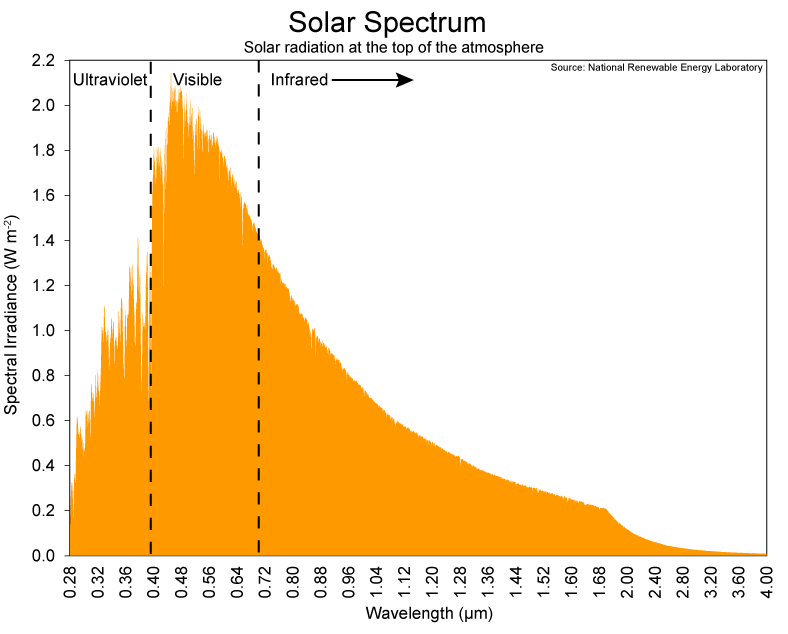Optimum Wavelengths
Certain wavelengths provide a better biological response. In short, CCO absorbs 4 peak areas of wavelengths (see figure below) in the 600-900 nm range that cover almost half of the 600-900 nm range. In an activated state, the CCO changes shape so that even more wavelengths are absorbed. It uses this energy to increase ATP and place the cell in an alkaline or oxidized state that results in many secondary benefits.
This wide range of wavelengths is specific evidence for the general evolutionary argument that a wide range of wavelengths exactly like the Sun is the best possible exposure. However, there are three ways it might be possible to provide equal or greater benefit than the Sun for hypoxic or injured cells: 1) LEDs can provide injured cells with a larger amount of light in the beneficial range and at times when the sun is not available, 2) we can reduce the heat and thereby provide higher concentrations that reach deeper cells (the Sun is limited to about 1/2 to 1 inch of depth like most LED and laser units), 3) in the future an inexpensive device will be made that is specifically tuned to the CCO set of proteins, having a specific sequence of pulse times of specific wavelengths and pauses, forcing CCO through each step of its pumping action with minimal heat and maximum depth.
A single wavelength may work as good as full spectrum by causing an electrostatic push or pull on neighboring electrons when moving only one electron (into or out of one of the two copper atoms in CCO). The electrostatic push and pull may cascade all the way through the electron transport chain. Complex II activity has been shown to increase even though it does not absorb these wavelengths.
Many different wavelengths have been used, but very few studies have compared different wavelengths. The figure above indicates wavelengths 610-625, 660-690, 750-770, and 815-860 nm are the best wavelengths. Considerations other than how well they activate CCO are: 1) which wavelengths penetrate the best (see section on absorption), 2) which LEDs provide the strongest light output (keep in mind 850 nm has 30% more photons per watt than 630 nm), and 3) possibly 630 nm being usefully absorbed and reflected as (aka "converted to") an 825 nm photon to be used again.
Inexpensive LEDs typically come in 630, 660, 850, and 880 nm with a hard-to-find (expensive) gap between 710 and 830 nm. (Often $1 for 830 nm and $0.05 for 850 nm). The peaks of the LEDs and optimum wavelengths are not exact, but spread out about +/- ~15 nm so there is an overlap of available LEDs and the biologically optimum wavelengths. The 630 nm LED can affect the 620nm peak in the chart, and 660 nm LED touches the 670 nm peak, and 850 nm is directly on one peak, but does not cover the nearby peak 820-830 nm as well.









